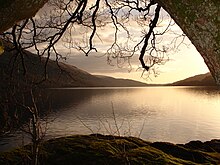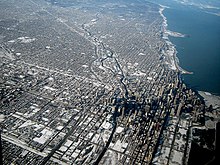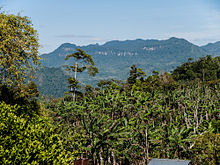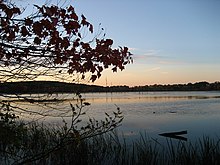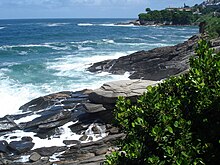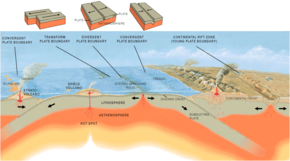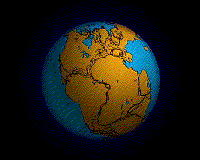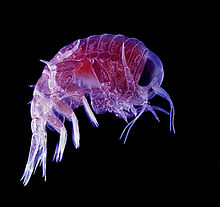Lakes
A lake (from Latin
lacus) is a
terrain feature (or
physical feature), a body of liquid on the surface of a world that is localized to the bottom of
basin
(another type of landform or terrain feature; that is, it is not
global) and moves slowly if it moves at all. On Earth, a body of water
is considered a lake when it is inland, not part of the ocean, is larger
and deeper than a pond, and is fed by a river.
[35][36] The only world other than Earth known to harbor lakes is
Titan, Saturn's largest moon, which has lakes of
ethane, most likely mixed with
methane.
It is not known if Titan's lakes are fed by rivers, though Titan's
surface is carved by numerous river beds. Natural lakes on Earth are
generally found in mountainous areas,
rift zones, and areas with ongoing or recent
glaciation. Other lakes are found in
endorheic basins
or along the courses of mature rivers. In some parts of the world,
there are many lakes because of chaotic drainage patterns left over from
the last
Ice Age.
All lakes are temporary over geologic time scales, as they will slowly
fill in with sediments or spill out of the basin containing them.
Ponds
A
pond is a
body of
standing water,
either natural or man-made, that is usually smaller than a lake. A wide
variety of man-made bodies of water are classified as ponds, including
water gardens designed for aesthetic ornamentation,
fish ponds designed for commercial fish breeding, and
solar ponds designed to store thermal energy. Ponds and lakes are distinguished from streams via
current
speed. While currents in streams are easily observed, ponds and lakes
possess thermally driven micro-currents and moderate wind driven
currents. These features distinguish a pond from many other aquatic
terrain features, such as
stream pools and
tide pools.
Rivers
A river is a natural
watercourse,
[37] usually
freshwater,
flowing toward an ocean, a lake, a sea or another river. In a few
cases, a river simply flows into the ground or dries up completely
before reaching another body of water. Small rivers may also be called
by several other names, including stream, creek, brook, rivulet, and
rill; there is no general rule that defines what can be called a river.
Many names for small rivers are specific to geographic location; one
example is
Burn in Scotland and North-east England. Sometimes a
river is said to be larger than a creek, but this is not always the
case, due to vagueness in the language.
[38] A river is part of the
hydrological cycle. Water within a river is generally collected from
precipitation through
surface runoff,
groundwater recharge,
springs, and the release of stored water in natural ice and snowpacks (i.e., from
glaciers).
Streams
A stream is a flowing body of water with a
current, confined within a
bed and
stream banks.
In the United States, a stream is classified as a watercourse less than
60 feet (18 metres) wide. Streams are important as conduits in the
water cycle, instruments in
groundwater recharge, and they serve as corridors for fish and
wildlife migration. The biological
habitat in the immediate vicinity of a stream is called a
riparian zone. Given the status of the ongoing
Holocene extinction, streams play an important
corridor role in connecting
fragmented habitats and thus in conserving
biodiversity.
The study of streams and waterways in general involves many branches of
inter-disciplinary natural science and engineering, including
hydrology,
fluvial geomorphology,
aquatic ecology,
fish biology,
riparian ecology, and others.


